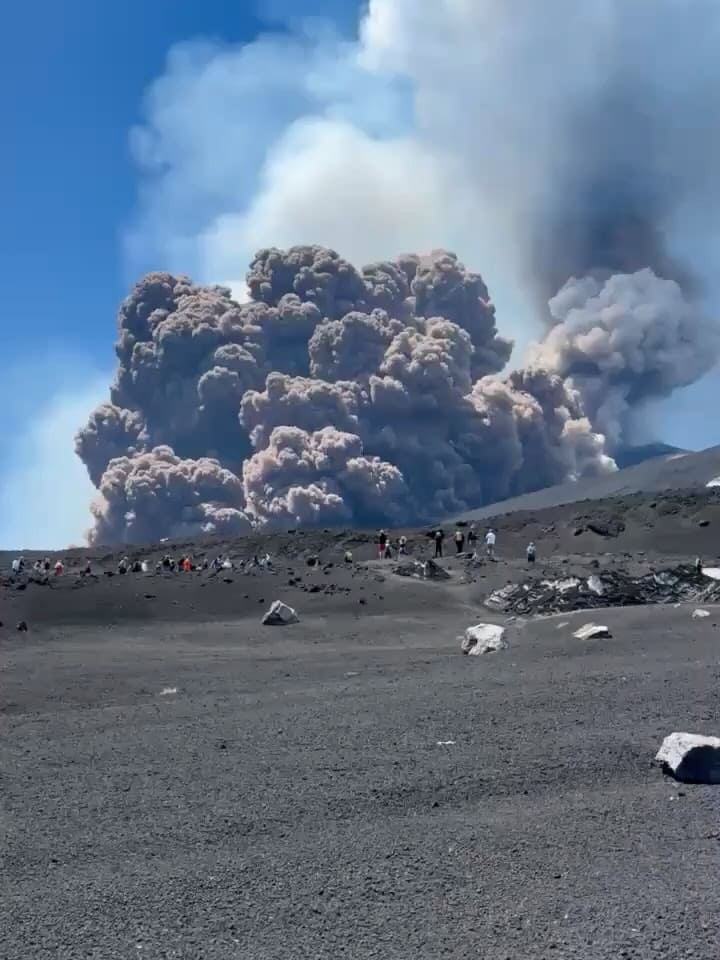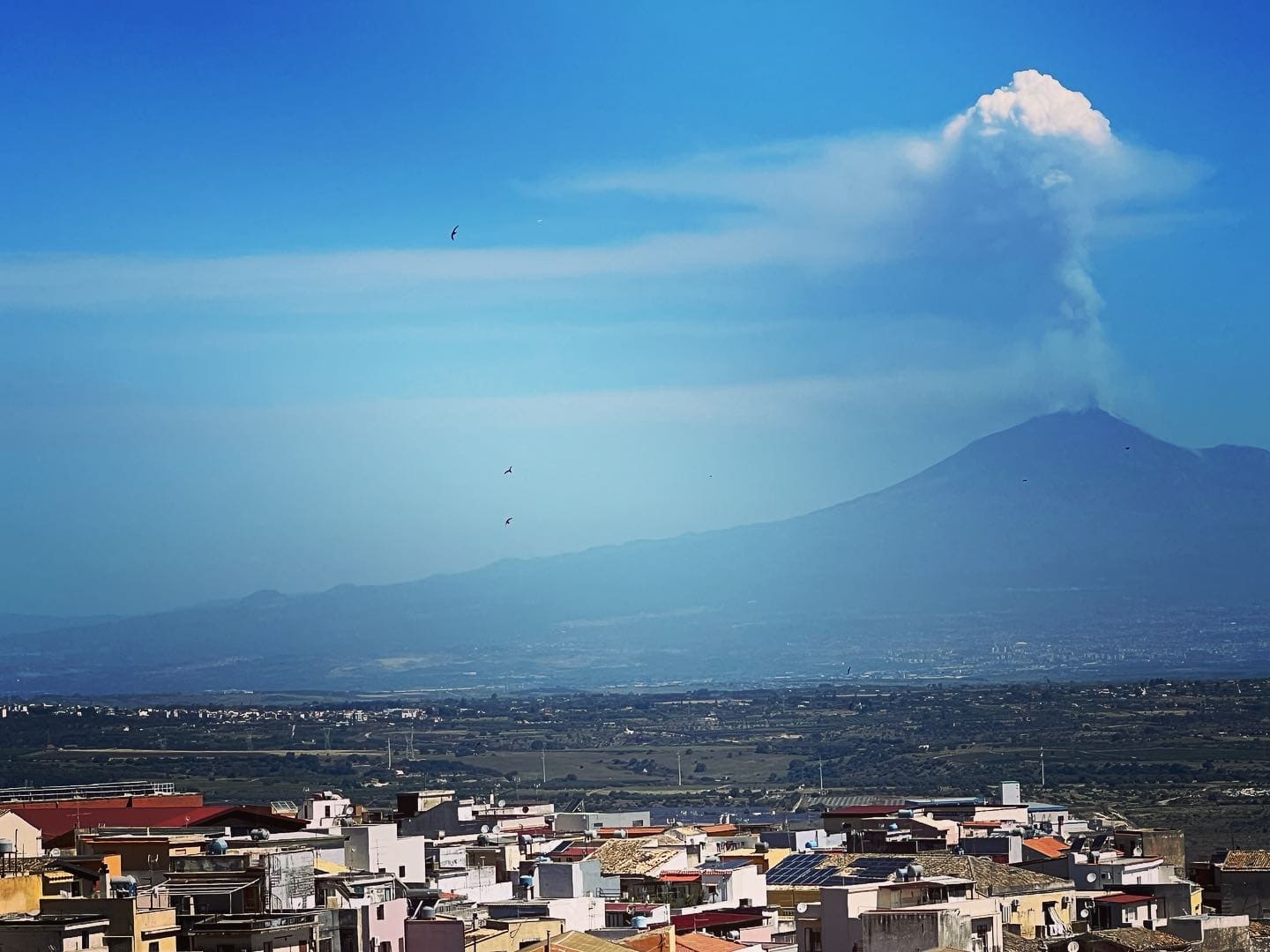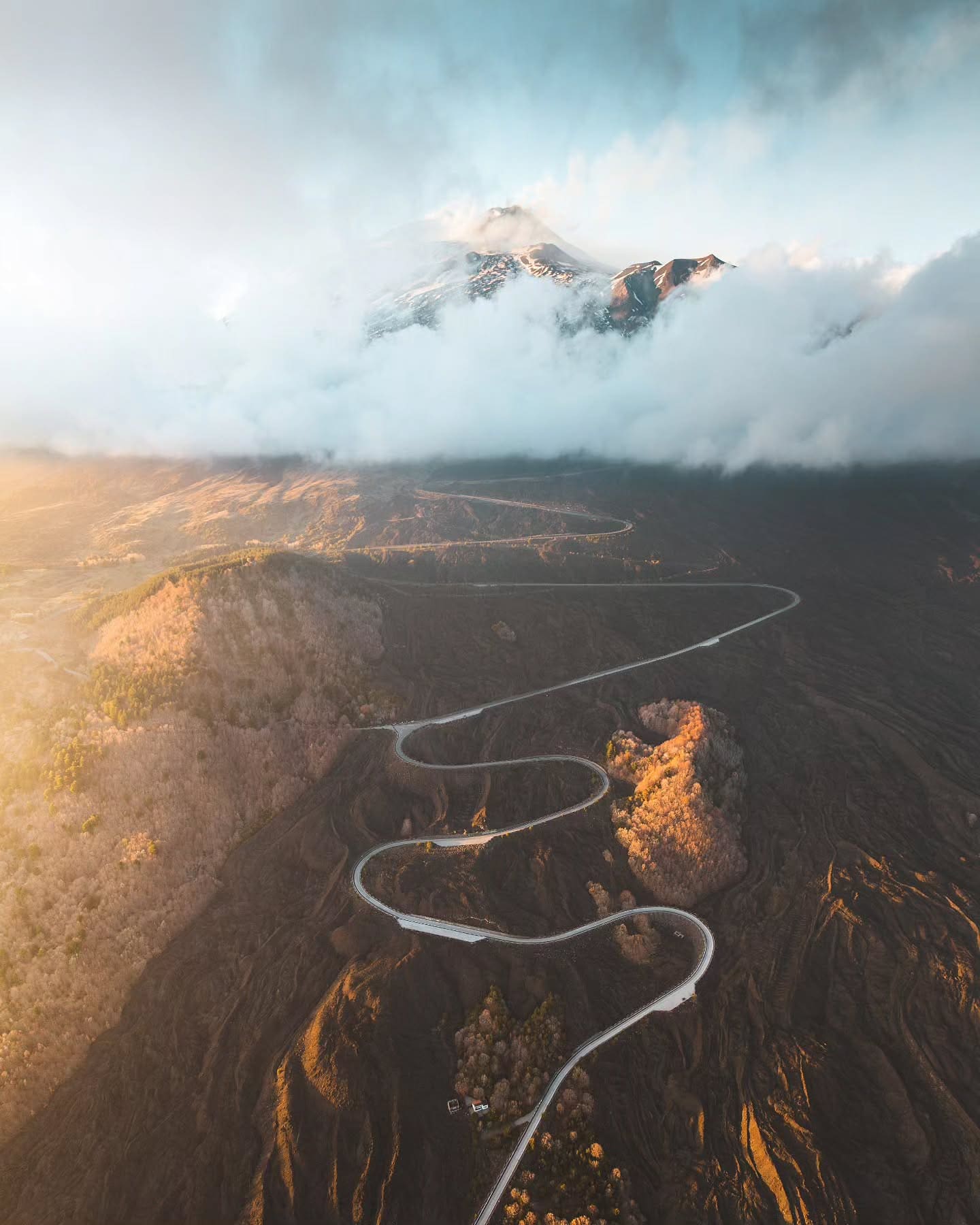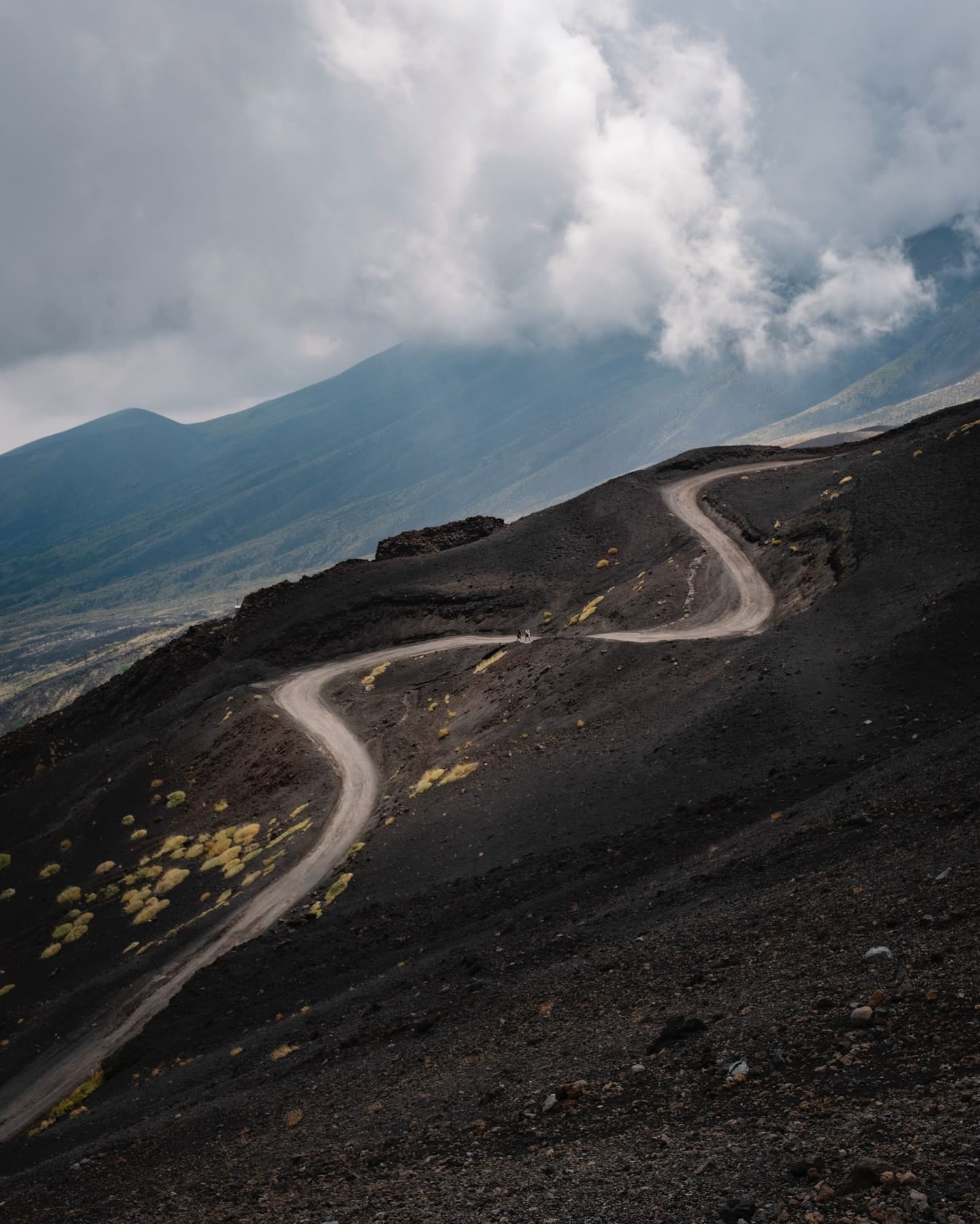Get the latest on the Mount Etna eruption: lava flows, flight delays, seismic activity, weather alerts, and how it compares to past historic eruptions.
Mount Etna, Europe’s most active volcano, erupted dramatically on June 2, 2025, sending massive plumes of ash and smoke into the sky and causing panic among tourists and locals alike. This article provides 17 critical updates on the eruption, offering insights into the event’s impact, safety measures, and what to expect next.
1. Eruption Began in the Early Hours of June 2, 2025

Mount Etna, Europe’s most active volcano, burst into activity on the morning of June 2, 2025. The Italian National Institute of Geophysics and Volcanology (INGV) detected seismic changes shortly after midnight, signaling a potential eruption. Just hours later, explosive lava fountains lit up the sky, accompanied by rumbling tremors that were felt as far as Catania, a city located roughly 30 kilometers from the crater. Such early-morning eruptions pose unique risks, catching local residents and hikers off-guard. While early warning systems are in place, the surprise timing added urgency to evacuation and safety protocols.
This event also marks one of the most significant eruptions since late 2021, drawing immediate attention from global volcanologists and emergency response teams. With the potential for follow-up eruptions, scientists are closely monitoring seismic activity in the surrounding regions to provide updated risk assessments.
2. Ash Plumes Soared Over 6,000 Meters into the Sky
One of the most visually dramatic outcomes of Mount Etna’s recent eruption was the massive ash column that rose more than 6,400 meters (approximately 21,000 feet) into the sky. These dense, dark clouds were visible for miles, grounding some flights from nearby airports including Catania–Fontanarossa and Reggio Calabria. Ash dispersal is a major concern for both air traffic and health. Inhalation of fine volcanic ash particles can cause respiratory issues, especially in sensitive populations like children and the elderly.
Local health authorities issued advisories urging residents to wear masks outdoors and avoid strenuous activities. Satellite imagery captured the ash plume drifting east over the Mediterranean, prompting alerts in neighboring regions including parts of Greece and Malta. Historically, such high-altitude ash clouds have disrupted European air travel, with the infamous 2010 Icelandic eruption serving as a stark precedent. Etna’s ash fallout is being closely tracked by meteorological agencies to determine future risks.
3. 40 Tourists Escaped as Eruption Unfolded
When the volcano erupted, around 40 tourists were hiking on Etna’s upper trails. Dramatic videos posted online showed them fleeing down slopes amid clouds of ash and falling volcanic debris. Fortunately, all were successfully evacuated with no reported injuries, thanks to quick action by local guides and the Mount Etna rescue services. This incident underscores both the allure and danger of active volcano tourism. Mount Etna, a UNESCO World Heritage Site, draws thousands of adventure seekers every year.
However, sudden activity—especially without advance seismic tremors—can rapidly transform a scenic hike into a high-risk emergency. The local government has since suspended all summit tours and advised visitors to avoid the area until further notice. Tour operators are now reassessing safety protocols and considering real-time alert integrations for better incident response. This situation also reignites the debate around regulating tourism on active volcanoes like Mount Etna.
4. Pyroclastic Flows Spotted on Southern Slopes
Observers reported pyroclastic flows—a fast-moving current of hot gas, lava fragments, and volcanic ash—rushing down Mount Etna’s southern flanks during the eruption. These flows are among the most dangerous aspects of volcanic activity due to their speed and high temperature, capable of reaching up to 1,000°C. Fortunately, no communities lie directly in the flow’s path, but emergency services were placed on high alert in nearby towns like Nicolosi and Zafferana Etnea.
Pyroclastic flows can destroy everything in their path and are often associated with significant casualties in past eruptions around the world. For example, the 1902 eruption of Mount Pelée in Martinique killed nearly 30,000 people in minutes due to pyroclastic surges. While Etna’s pyroclastic flows were smaller in comparison, their presence indicates the eruption’s severity. Volcanologists are now studying the morphology of the flows to better understand how Etna’s eruptive behavior might evolve in the coming days.
5. Mount Etna Cable Car Operations Suspended
As the eruption intensified, authorities swiftly suspended the operation of the popular Mount Etna cable car, which normally transports visitors from Rifugio Sapienza to the higher-altitude observation areas. This move was taken as a precaution to prevent potential injuries from falling ash, rocks, or sudden lava outbursts. The cable car system, which plays a critical role in Etna’s tourism infrastructure, was last halted during the 2021 eruption cycle and had only resumed full operations in early 2024.
Local operators are inspecting the cables, machinery, and terminal buildings for ash damage and heat stress before determining a reopening date. This disruption not only affects tourists but also impacts local businesses that depend on daily visitor traffic. With Mount Etna’s unpredictability, the suspension could last several weeks, underscoring the volcano’s influence not just on the landscape—but on the regional economy.
6. Local Schools and Businesses Temporarily Closed

Following the Mount Etna eruption, local municipalities near the volcano—including Nicolosi, Bronte, and Zafferana Etnea—announced the temporary closure of schools and non-essential businesses. Ashfall covered rooftops, roads, and public spaces, prompting safety concerns and cleanup efforts. The regional government deployed emergency crews to remove volcanic material from critical infrastructure like hospitals and evacuation routes. Residents were advised to stay indoors and wear protective gear if venturing outside.
Mount Etna’s past eruptions have shown that even mild ash exposure can affect electrical grids and water systems. Some areas experienced minor power outages due to ash interference with transformers. Businesses dependent on tourism, such as souvenir shops and cafés around the Mount Etna cable car station, are facing financial uncertainty, especially after having only recently recovered from earlier eruption-related closures. Authorities will reassess closures based on seismic updates and air quality reports over the coming days.
7. Mount Etna Weather Conditions Complicate Monitoring
Unpredictable weather patterns have made it difficult for scientists to fully monitor Mount Etna’s activity in real time. Heavy cloud cover, combined with plumes of ash, has obstructed satellite views and drone footage of the summit craters. INGV teams are relying on seismic sensors, ground-based radar, and thermal imaging to analyze the volcano’s behavior. Weather conditions also affect ash dispersion—strong winds can rapidly spread ash over long distances, threatening air travel and agriculture. Vineyards and farms on Mount Etna’s fertile slopes are particularly vulnerable.
The region is known for its wine production and volcanic soil, but ashfall can damage crops and disrupt irrigation. Meteorological agencies are working closely with emergency services to provide up-to-date forecasts. As of now, shifting wind patterns could direct ash toward the Ionian coast, raising concerns for nearby cities like Catania and Taormina. Accurate weather tracking remains essential for managing Mount Etna’s ongoing risks.
8. Eruption Triggers Increased Global Seismic Monitoring
Due to Mount Etna’s current eruption, global seismic agencies have elevated their monitoring efforts—not just in Italy, but across the broader Mediterranean basin. The eruption could potentially trigger sympathetic seismic events in other volcanically active zones, such as Stromboli or Vesuvius. While Mount Etna is not directly connected to these systems, increased tectonic stress in one area can occasionally influence neighboring faults.
European Space Agency (ESA) satellites are conducting radar scans to detect surface deformation, while volcanologists are studying Etna’s magma composition to assess whether deeper geothermal systems are being disturbed. Mount Etna has historically been a key focus for predictive modeling in volcanology, given its frequent activity and accessible terrain. Current data suggests magma is still rising, which could signal continued eruptions over the coming days or weeks. As such, monitoring Mount Etna has become a top priority for scientists tracking regional geophysical hazards.
9. Social Media Flooded With Live Mount Etna Footage
As soon as Mount Etna erupted, social media platforms were flooded with photos and videos from residents and tourists. Clips of the volcano spewing lava and billowing smoke quickly went viral on TikTok, Twitter (X), and Instagram, drawing millions of views in just hours. Hashtags like #MountEtna and #EtnaEruption2025 began trending globally. Citizen-generated content has proven invaluable for real-time situational awareness, allowing emergency responders and geologists to gauge eruption scale and impact even before satellite data becomes available.
The raw footage also raised public awareness about the risks of visiting active volcanoes without proper guidance. Many users expressed awe at the spectacle of Mount Etna, while others voiced concern about environmental and health consequences. Digital media has once again shown its power in disaster reporting—providing up-close views that traditional news outlets can’t always capture. INGV even uses some of this public footage to supplement their scientific analyses.
10. Historic Context: How This Eruption Compares to Past Events
To understand the significance of the 2025 eruption, it’s helpful to compare it to Mount Etna’s historical eruptions. One of the most devastating occurred in 1669, when lava destroyed large parts of Catania. More recently, the 2001 and 2017 eruptions disrupted air traffic and caused damage to the summit area. The current eruption, while visually dramatic, has not yet reached the destruction level of these past events—but it’s still under review.
Scientists note that the frequency of Mount Etna’s eruptions has increased in the last decade, suggesting changes in the volcano’s magma chamber or tectonic setting. Geologists are examining whether recent shifts in the African and Eurasian tectonic plates may be accelerating volcanic pressure beneath the mountain. Comparing eruption metrics like ash height, lava output, and pyroclastic flow extent helps researchers and civil protection officials prepare for potential escalations. Mount Etna remains a textbook case in volcanic evolution—and a reminder of nature’s raw power.
11. Catania Airport Flights Delayed or Diverted
Mount Etna’s eruption had immediate consequences for air travel. Catania Fontanarossa Airport, one of Sicily’s busiest hubs, experienced numerous delays and flight diversions due to volcanic ash in the atmosphere. Airport authorities activated an emergency response plan, temporarily halting takeoffs and landings while air traffic control rerouted flights to Palermo and Reggio Calabria. Volcanic ash poses a serious risk to aircraft, as it can damage engines, reduce visibility, and interfere with instruments. In past Mount Etna eruptions, flights across Europe were disrupted for days, costing airlines millions.
This time, contingency plans helped limit the impact, though many travelers were stranded or faced hours-long delays. The Italian Civil Aviation Authority issued a NOTAM (Notice to Airmen) warning of reduced visibility up to 150 kilometers around Mount Etna. Airlines are closely monitoring ash cloud movement before resuming full operations. The situation underscores the complex relationship between natural hazards and modern transportation networks in volcanic regions.
12. Volcanic Tremors Continue Beneath Mount Etna

Seismic activity beneath Mount Etna remains elevated following the eruption. According to INGV, hundreds of micro-earthquakes have been recorded since June 2, indicating ongoing magma movement beneath the volcano. These tremors serve as both a warning sign and a diagnostic tool—helping volcanologists map the internal structure and predict possible future eruptions. The most intense tremors were centered near the Southeast Crater, a known hot spot for Mount Etna’s frequent outbursts. While none of the recent earthquakes surpassed magnitude 3.0, the clustering pattern suggests a pressurized magma column rising from deep chambers.
Continuous monitoring stations around Mount Etna provide real-time seismic data to emergency coordinators and the public. Experts caution that the presence of tremors means the eruption sequence may not yet be over. Communities on the eastern slopes are especially vulnerable due to past lava flows, prompting authorities to remain in a state of readiness. The situation is fluid and developing.
13. Etna’s Lava Flow Reaches 2 Kilometers From Crater
Lava flows from Mount Etna’s eruption have traveled approximately two kilometers down the southeastern slopes as of the latest observations. While no towns are currently in direct danger, civil protection agencies are monitoring the lava’s trajectory. The molten rock—reaching temperatures of over 1,100°C—is moving slowly, allowing time for response efforts. Nonetheless, lava can cause extensive damage to agricultural lands, infrastructure, and wildlife habitats. Mount Etna’s lava is typically basaltic, which tends to flow more fluidly than that of other volcanoes like Vesuvius or Krakatoa.
Emergency workers have established observation posts and thermal cameras to track the advancing flow in real-time. In previous events, diversion tactics—such as trenches or explosives—have been used to redirect lava away from towns. For now, Mount Etna’s lava remains mostly within the uninhabited high-altitude zones, but authorities are not ruling out the need for protective interventions if flow velocity increases or direction shifts.
14. Air Quality Worsens in Eastern Sicily
The eruption has significantly impacted air quality in areas surrounding Mount Etna. Ash particles, sulfur dioxide, and volcanic gases have combined to form a hazardous haze blanketing towns like Catania, Adrano, and Biancavilla. Regional health authorities have issued alerts urging vulnerable populations—especially the elderly and those with respiratory issues—to remain indoors. PM10 and PM2.5 levels have exceeded World Health Organization safety limits, prompting the temporary closure of some public schools and outdoor venues.
Mount Etna’s emissions often carry acidic compounds that can irritate eyes, skin, and lungs. Local pharmacies reported a surge in demand for masks, inhalers, and allergy medications. Mobile air monitoring units have been deployed to assess pollution concentrations in real time. The regional environmental agency is advising residents to check Mount Etna weather updates before engaging in outdoor activities. Mitigation strategies include increased street cleaning and public advisories through text alerts and radio broadcasts.
15. Mount Etna Tours Postponed Until Further Notice
Tour operators across Sicily have halted Mount Etna excursions indefinitely following the eruption. Companies offering jeep safaris, crater treks, and guided hikes have refunded or rebooked thousands of travelers. Safety is the top concern, especially with active lava flows, falling ash, and unstable terrain near the craters. This suspension deals a blow to the local economy, as Mount Etna tours are a major attraction—especially during the summer peak.
Some tour providers are pivoting to lower-altitude wine and culinary tours, still offering views of the smoking volcano from safe distances. The regional tourism board is working with civil protection units to develop new safety standards, including real-time volcano alerts via mobile apps and enhanced evacuation signage on trails. Authorities emphasize that while Mount Etna remains an awe-inspiring natural wonder, responsible tourism must adapt to its dynamic and sometimes dangerous behavior.
16. Scientists Say More Eruptions Could Follow
Volcanologists warn that the current Mount Etna eruption may not be an isolated event. Based on magma pressure readings, gas emissions, and seismic frequency, there is a moderate to high chance of continued eruptive phases in the coming weeks. Etna is known for its episodic activity—periods of calm followed by sudden explosive bursts. Scientists at INGV are particularly focused on the volcano’s Southeast Crater, which has shown signs of increasing deformation.
Remote sensing data from ESA satellites indicate elevated heat signatures and surface swelling, both of which signal active magma chambers. Researchers also cite Mount Etna’s history: in 2021, the volcano erupted more than 50 times within six months. Emergency services remain on high alert and are regularly updating evacuation protocols. Locals are urged to stay informed through official channels rather than social media speculation. Accurate forecasting is challenging, but ongoing monitoring aims to provide as much advance notice as possible.
17. Mount Etna Remains a Powerful Symbol of Sicily

Despite the risks and destruction, Mount Etna continues to hold deep cultural and spiritual significance for Sicilians. Known in local folklore as “Mungibeddu” or “Mama Etna,” the volcano is both feared and revered. Its fertile volcanic soil sustains vineyards, olive groves, and pistachio orchards that are vital to the island’s economy. Artists, poets, and writers have long drawn inspiration from Mount Etna’s powerful presence. Many locals see eruptions not as disasters, but as reminders of the mountain’s vitality and the cycle of creation and renewal.
Town festivals and religious processions are often timed around Etna’s seasonal behaviors. Even now, as lava flows and ash blanket the region, there is a quiet resilience among Sicilians. Mount Etna is not just a geological phenomenon—it is a living, breathing entity that defines the island’s identity. In the face of eruption, Sicily stands in awe of the very force that shaped it.
Conclusion: Mount Etna’s Eruption Reminds Us of Nature’s Power
The ongoing Mount Etna eruption is a striking reminder of the volcano’s untamed power and its deep connection to life in Sicily. From grounded flights and seismic tremors to ash-covered towns and suspended tours, the impact has been widespread and evolving. Yet, amid the chaos, communities are responding with resilience, scientists are providing critical insights, and travelers are adjusting plans with safety in mind.
Mount Etna isn’t just Europe’s most active volcano—it’s a living force that shapes the land, culture, and rhythm of the island itself. While authorities continue to monitor the situation closely, it’s clear that this eruption may be part of a longer eruptive cycle.
Stay informed, stay safe, and respect the volatility of this iconic giant. Whether you’re a curious observer or a hopeful tourist, keeping up with Mount Etna news ensures you’re prepared and connected to one of nature’s most awe-inspiring events.